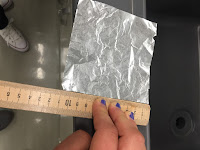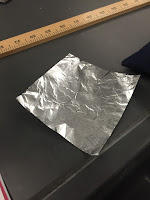- Chicago has 37 moveable bridges.
- The Michigan Avenue bridge is a double-lear, double deck bascule trunnion bridge.
- Chicago bridges are painted red to recreate the original paint color, which was red lead paint (to prevent rusting) mixed with black powder (to tone down the red).
2 Things I Found Surprising in this Lab:
- I was surprised that the Chicago River was so clean according to all of our tests; I've grown up in Chicago and have been told by my whole family to never swim in the river or even go too close to it for fear of pollution. However, the tests we performed in this lab disproved their theories of its severe pollution.
- I was surprised that the bridge requires so little energy to be moved. In the museum, a sign said that the amount of energy needed to lift the bridge is the amount of energy in a 1950s Volkswagen Bug motor.
1 Question I Have After This Lab:
- Who/what else was affected by the River's pollution before the flow was reversed? Because of the amount of pollution and untreated sewage that went into Lake Michigan, which is so large and connects so many places, what other places or people were affected?
The test I did was of the Chicago River's pH. This test measures the concentration of hydrogen atoms and the acidity of a fluid. This is important because too much or too little acid in a river can be dangerous for the environment in and around the river. We took a sample of river water, placed a pH testing fluid in, waited for the water to change color, and then matched that color to one on a chart to see what the pH was.
Based off of the Q values found in class, we can classify the river's quality as excellent. However, we were so close to the lake that our results might have been tainted by the low percentage of actual river water. However, this could be improved if fewer things are put into the river; for example, runoff from chemicals often gets into the river and pollutes it. I personally can work to reduce the number of chemicals I use in my life (in hair products, soap, food, etc.) to cut down on the number of chemicals that could potentially enter the environment.


































